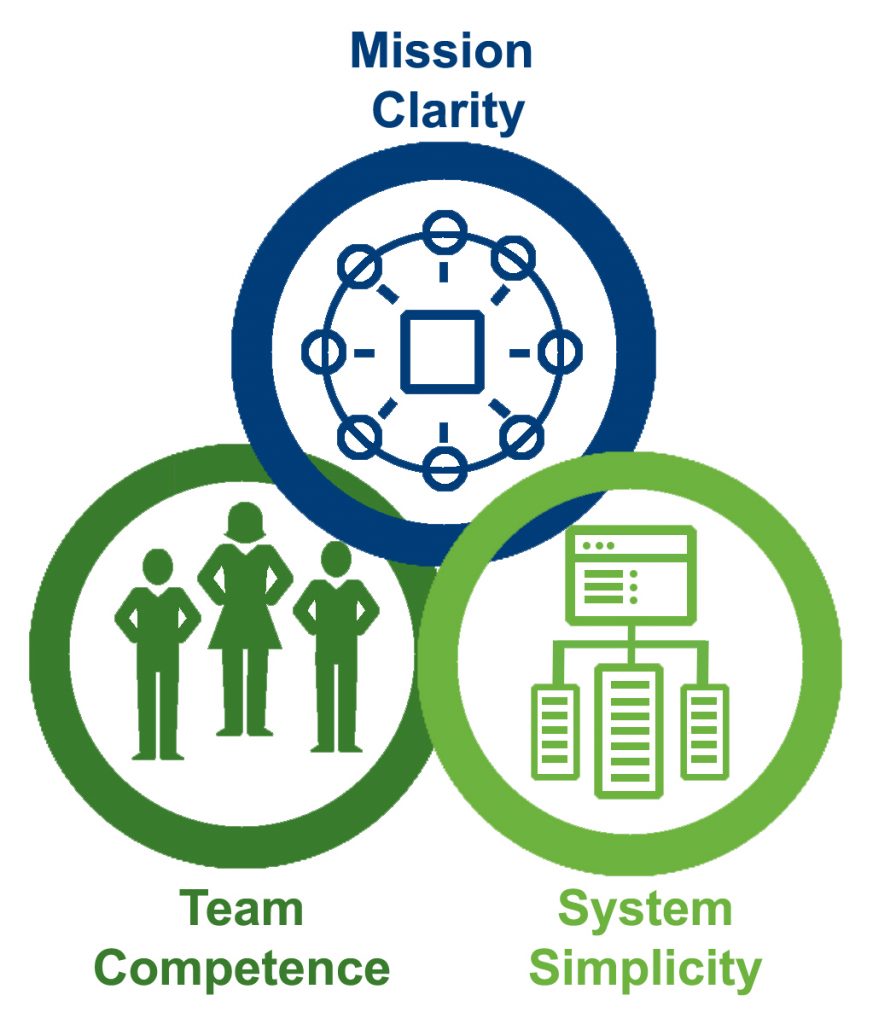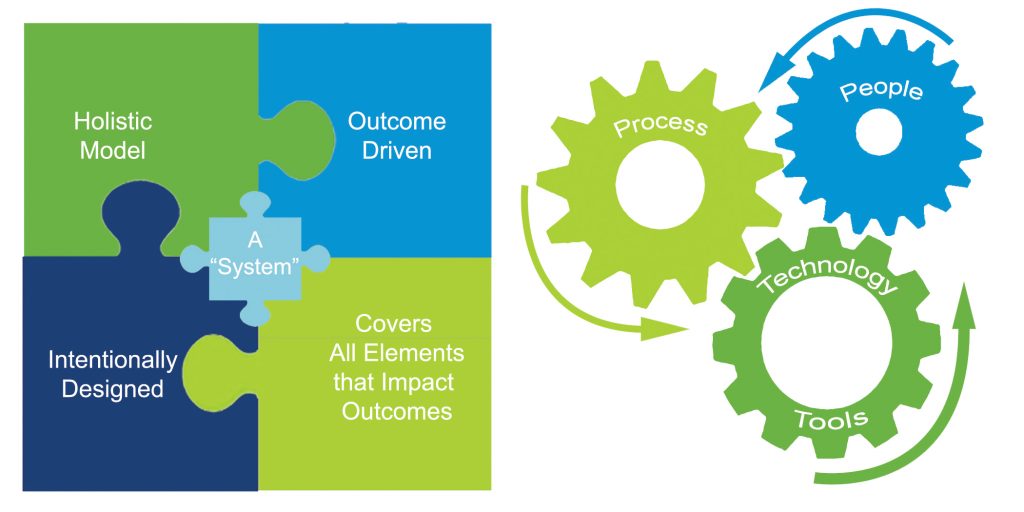
HEMAN SMITH
Advisory Strategist
One of the big challenges with Digital Transformation is SPEED. Both the speed at which it is happening across the world, and within every industry – and the pace with which IT teams must adapt and work to accelerate their own capabilities. The speed of change outside IT is accelerating, and IT organizations’ ability to adapt to speed is lagging.

As much as speed is a challenge, it is also a primary benefit of this digital transformation. When a team, an organization, or an industry can effectively re-orient itself and shift, then the ability to compete and capitalize on the power of “digital” technologies yields stellar results. This is easier said than done.
For example, your IT staff members are solid, hard-working, smart people, but they likely lack the skills and the mindset for successful, high-speed digital change. They have not acquired all the experience in knowing what to do and how to shift with this thing called “digital”. They need clear guidance with decisive, and purposeful leadership so they can be effective in enabling digital capabilities. They need a proven model for successful change.
As an IT executive, you can address this effectively with three keys that impact and build on each other. The following order of priority is essential.
The Keys: Mission Clarity, Team Competence, and Systems Simplicity.

The reason for the order of priority is pivotal in guiding and impacting the subsequent “Keys”. Mission clarity gives direction and purpose – WHAT and WHY – to a team. A team’s competence is restricted or enhanced by the clarity of the mission they are on. Teams design systems – which are intended to deliver specific results. If a team is unsure of its mission, then its ability and competency in designing proper systems and executing with stellar results are crippled.
Key ONE: Mission Clarity
We human beings want clarity. If we are asked to do something, but the what and why are unclear, the natural reaction is to be hesitant while we try and “figure out” what to do. Because the outcome, path, and purpose are unclear, we as leaders will often see some resistance to the request, ranging from reticence to rebellion. The less clear, the greater the resistance.
As a leader, you have the primary responsibility for creating a clear, compelling sense of mission. What we are going to do, and even more importantly, “WHY”. What are the reasons, the benefits, and the outcomes? Such a mission statement is most effective when crafted using this formula: From X to Y by Z, which I learned from the book “The Four Disciplines of Execution”. Let me give you a simple example.
We will enable digital Dev/Ops support by changing from our existing method and timing of fulfilling developer platform requests via ticket or emailed form submission.
[X] NOW: Fulfilling a request may take multiple weeks, requiring handoffs across teams/silos, and using too many manual processes
[Y] FUTURE: Fulfill a developer’s platform request using a new, fully automated system via API and code – in less than 24 hours (to include compute, storage, network, and security context)
[Z] DEADLINE: 31 July 2018
Such a statement is clear enough that the leader issuing the statement knows exactly what is intended, as well as their direct-reports, and the staff across the department. You want a directive to be so clear that it won’t be misunderstood. Each person should be able to clearly understand what the team is going to do, and how they personally fit into making it happen. Such clarity eases resistance. It also strengthens credibility – which is essential to taking effective action.
Leaders need to give direction to their management staff, and throughout their organization with clear statements of “WHAT” and “WHY”. The “HOW” is best left out of the mission statement, and best mapped out in the strategy determined by teams needing to execute on the mission. The reason is so that teams adopt full ownership of the outcome by crafting the “HOW, WHEN and WITH WHAT” – the strategy for execution.
Key TWO: Team Competence
We human beings are creators, inventors, and problem-solvers. We like the freedom of choosing, experimenting, discovering, and finding answers. I got involved with technology and IT because I loved the challenge and creativity I could see and experience, in solving problems, and coming up with powerful solutions. It was thrilling and very rewarding.
Teams in the accelerated digital world need to capitalize on each team member’s natural desires and abilities for creative problem-solving. This is best addressed with a cross-discipline, collaborative methodology. Integrating multiple disciplines, diverse backgrounds and perspectives gives teams the ability to see outside the “IT Box”, and come up with whatever best fit to solve the need.
Taking time to effectively form, lead and nurture a team along with a creative culture is a leader’s greatest value, and will deliver the best outcomes. An initial reaction to the time it takes to work with people might be: “I don’t have time to invest in this…”
To be candid, team competence is “THE” critical, pivotal, catalytic “KEY” to success in IT. A clear, compelling mission enables it; system simplicity augments it! Competence is directly related to a team’s speed of execution. For a team to stay consistently competent in a high-speed digital world, IT leaders must invest in their team members at a higher level of priority than ever before. Choosing to not invest will cripple your teams, your department, and your future success. You will lag at an ever-increasing rate.
Key THREE: System Simplicity
Let’s get the elephant-in-the-room front-and-center for discussion. Historically, IT has been the department of technology “management”, responding to requests to stand-up technology, and then keep it running. IT organizations have been primarily project-focused in their efforts for more than 30 years. For a few years now, IT has been too often seen as a costly, necessary cost-center, which is old-fashioned and slow.
To be successful and valuable moving into the future, IT must shed old, slow habits, and adopt new models, behaviors, and practices forming a new culture for digital success.
The digital-world reality is already changing: Rapidly – Innovatively – Disruptively!
Technologies are getting both more powerful, and more complex. Both factors are death to a project-centric IT department. The need for rapid adaptability, even disruptive reinvention is real and constant. Businesses can buy and consume technologies with little or no interaction with the IT department. So, what is ITs value in today’s world, and how can they add unique value?
The Solution: SPEED TO VALUE OUTCOMES
Speed to value outcomes is imperative for IT to remain valuable to the business. Focusing on crafting systems instead of delivering projects focuses IT on its ability to deliver real value, at high speed.
IT must rapidly shift to designing and implementing simple, adaptable, innovative systems. For the purposes of this article, a system is a holistic model, outcome-driven, intentionally designed, and covers all elements that impact the outcome needed. It must include all necessary elements related to people, process, and the technology or tools involved.

A simple system that is easy to use and delivers an essential, innovative and adaptable result is immediately seen as a non-negotiable core business tool. Systems such as email, cell phones, virtualization, etc.
Let’s take the smartphone most people now use as part of daily life as an example.
Is a smartphone, whether Android or IOS, simple, or complex? The answer is both! It is simple to use, and magnificently complex underneath. The smartphone is a system that delivers specific, intentionally designed results in a way that is simple for the “consumer” to access, consume, modify and upgrade.
The reason a smart-phone is so powerful is that a focused, cross-discipline and collaborative team, with excellent competence, executed on a mission to design and deliver a system for a specific outcome/purpose. The success of such a deliberate and calculated system design is in your hand! Smartphones have transformed both personal life and business capability. It is an example of catalytic digital change.
Summary: Three Catalytic Keys to Digital Success
Smart CIOs will take the time to focus on the following three catalytic keys for digital success.
Mission Clarity, Team Competence, and Systems Simplicity
These keys enable an IT leader’s ability to deliver dramatically better value to the business, and to their IT organization. When these “Catalytic Keys” are focused on, change can happen rapidly, and culture will shift to support the future. Resistance to change will diminish because every team member will be involved in a mission they believe in, and a future they can envision unfolding.
Heman Smith is a strategist with VMware Accelerate Advisory Services. His mission with VMware’s Advisory Services is helping client executives clearly determine strategic focus, and then execute on their new Digital Transformation vision and goals.
He works with customers to bring clarity and definition to their ideal IT model, and their execution strategies. He specializes in the challenges and changes needed in IT organizations and operations in today’s high-speed, digital business world.
Heman has over 30 years of experience in business, IT and technology. He is based in Utah.





